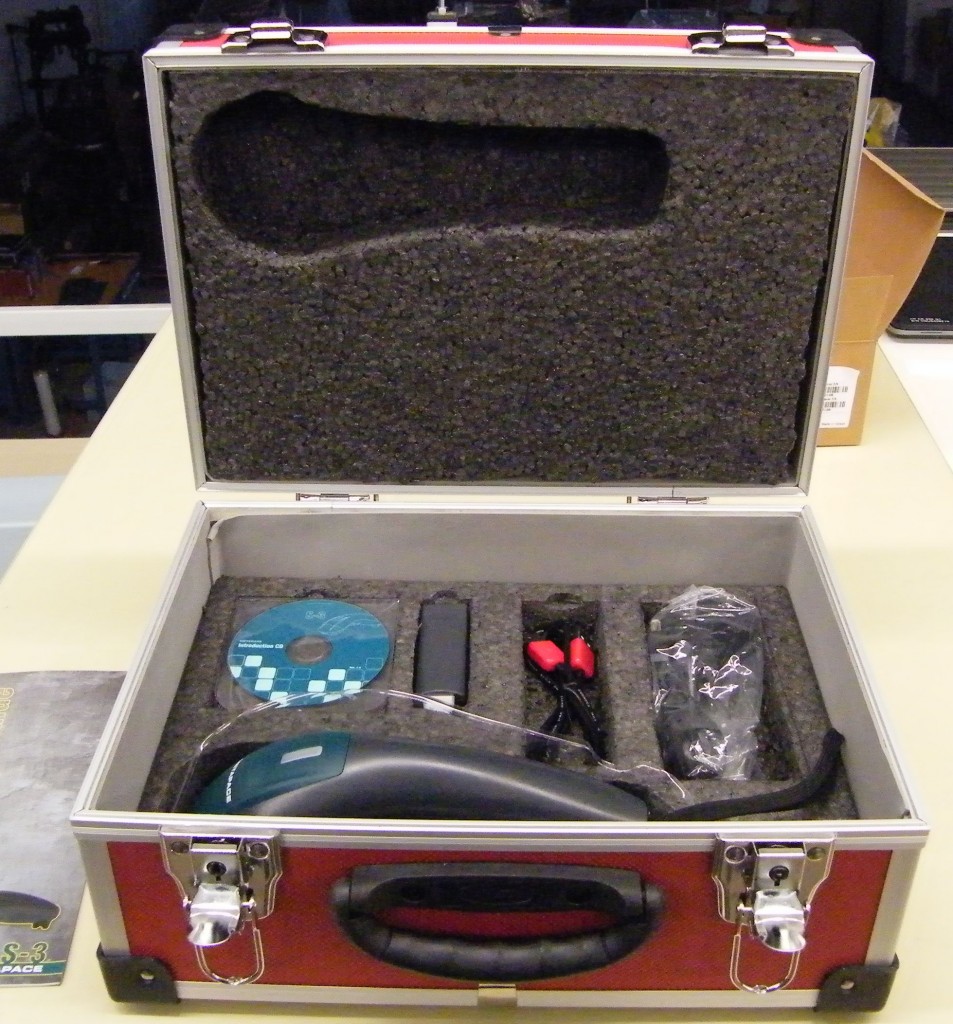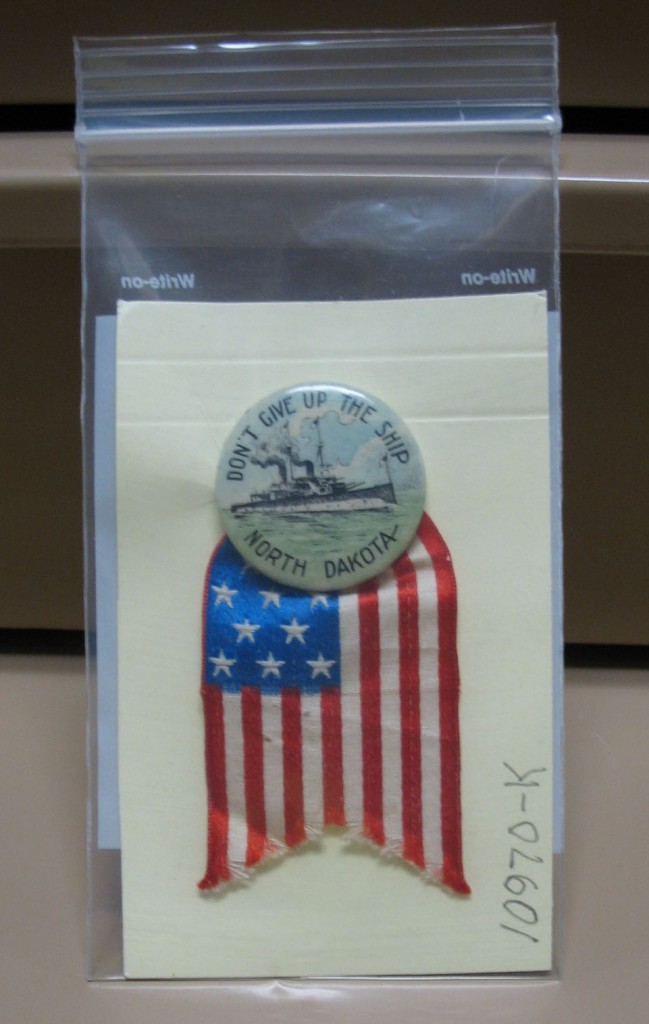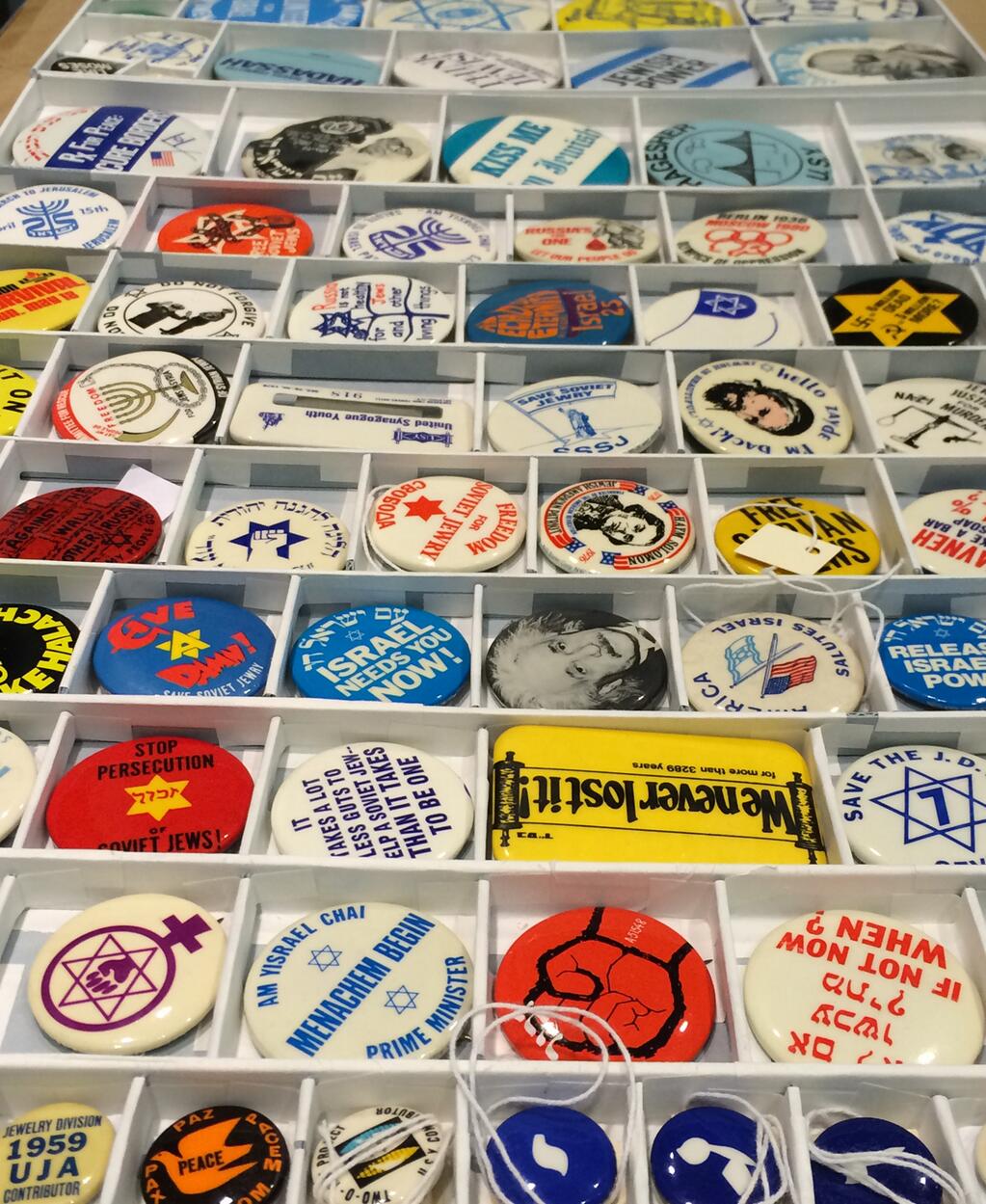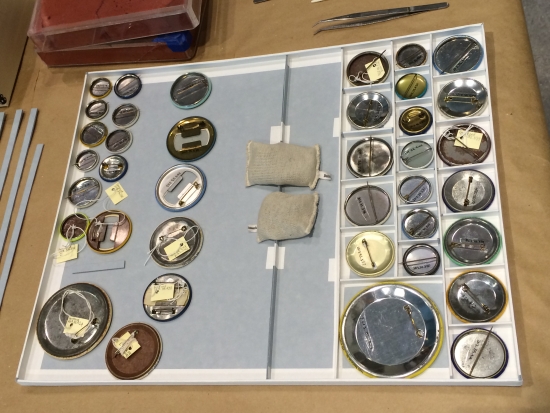I work with a lot of awesome people. Of course I know that, but every now and then I even get a reminder. While tidying our packing space I found a piece of paper where one of our assistants has carefully constructed a custom box for one of our vacuum tubes. I couldn’t bring myself to just throw it away, I had to share it with all you packing nerds out there:
Category Archives: Storage Solutions
Ideas on how to pack and store artifacts
Collection Storage Tips and Tricks #reorgtips
By Simon Lambert
We collections professionals are a creative bunch. Because of our great passion, we do not let limited resources get in the way of our commitment to preserve our collections and make them accessible to our community. Tonnes of innovative ideas on how to store different types of objects are developed in museums, libraries and archives all the time. Sadly, these amazing ideas are rarely shared with the rest of the world. In your collection storage area, there are ideas that could benefit others who may be facing similar challenges as you.
If you work with collections, at some point, you have found solutions that you or your colleagues are particularly proud of, no matter how simple and modest it may be. You have found new ways to optimize space, to re-use existing materials and to make sensible use of resources. This is your opportunity to share your ideas with colleagues around the world and to learn from theirs.
Send us one or two photos of your storage solution with a short descriptive sentence that tells us:
- The type of object
- The materials used or re-used to create your storage solution
- Why this system is better than before
There are several options for sharing your photos:
- On the RE-ORG International Facebook page: http://www.facebook.com/reorgstorage
- On Twitter, Instagram or Facebook using the hashtag #reorgtips
- By email : reorgstorage (at) gmail (dot) com
You have until 31 March 2016 to send us your submission. The results will be posted on a Tumblr blog and hosted on the ICCROM website.
Important notice: By sending your images, you acknowledge that they are yours and that you have the permission to send them, but that you’re willing share them under a Creative Commons Attribution-NonCommercial 4.0 International licence.
Here are some examples:

“We adapted a shelving unit to store our collection of oars and spears. We are able to use up less shelf space than before. We’ve gained more room for other objects.”
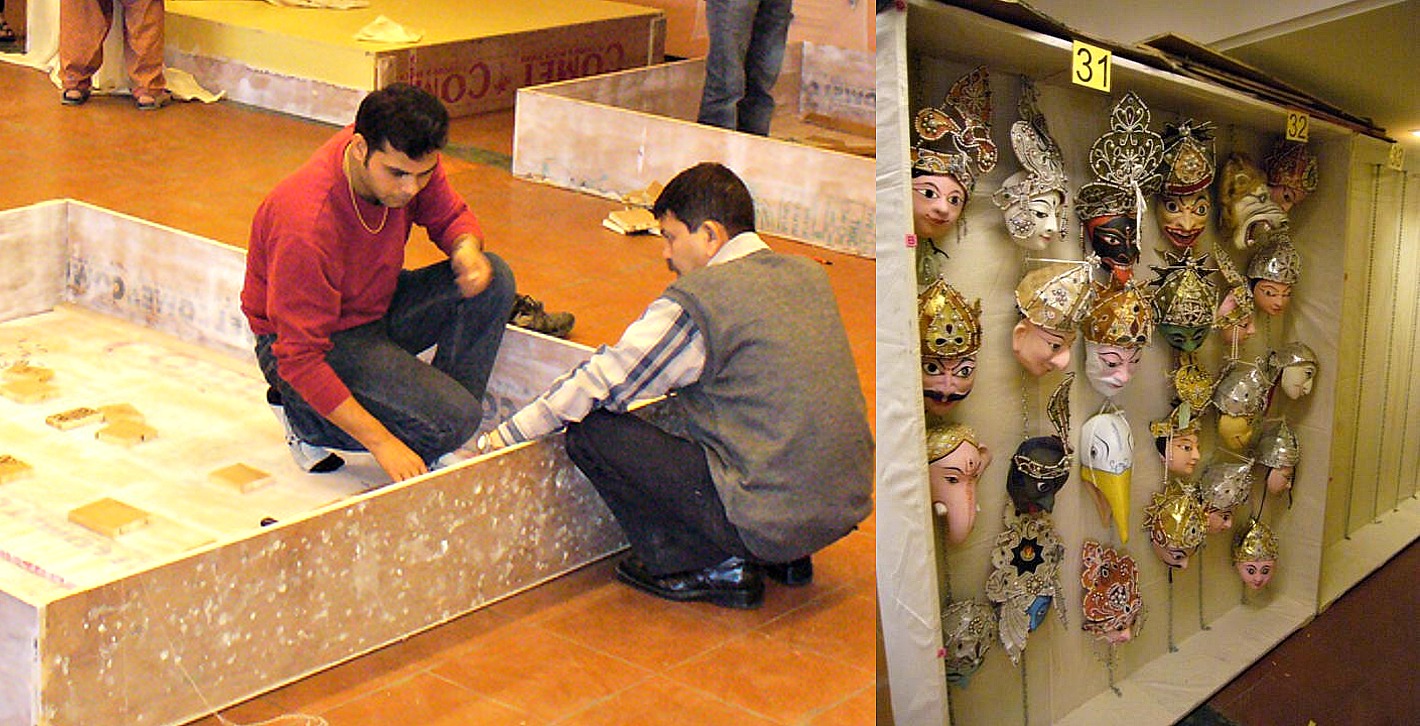
“We re-used large wooden crates. We fixed secured chains on the crates to hang the masks. Now they are off the floor, so we will no longer risk stepping on them.”

“We created compartments in a box with cardboard folded in zigzags. Now we can take each pen easily. Also, they don’t rub against each other.”
This is a RE-ORG International initiative launched by ICCROM in collaboration with the Canadian Conservation Institute (CCI).
This post is also available in Italian, translated by Marzia Loddo and in Russian translated by Helena Tomashevskaya.
Storage Solutions: A Home For The Barcode Scanner
Motivated by the experiences of Sheila Perry (See “If it moves, barcode it“) we are at the moment in the process of implementing barcoding in our collections management at the TECHNOSEUM. We need the scanners portable and protected from all the dangers the storage of a science museum hold. We bought standard aluminium cases in red, so we can easily spot them in the storage (the color already proved useful for clipboards and cutters). Then I handed the task to think of a good protection for scanner and accessoires to my student assistant, Linda. Here is the first beauty she created:
The material is a black polypropylene foam we use for creating mounts in exhibitions. Can you see she even carved little fingerholes so one can remove all the acccesoires like the USB stick easily? Definitely the best housed tool we have at the moment! Now, Linda entered serial production as we have some more scanners…
Storage Solutions: Alternative Button Storage
Recently we posted the button storage solution of the MJH. But what if you don’t have a skilled preparator and no time on your hands for such a solution? Well, there’s the approach the Curator of Collections Management of the State Historical Society of North Dakota, Jenny Yearous, sent us.
She told us how they do it:
“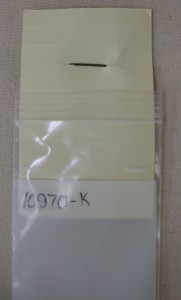 Acid Free card stock cut smaller than the zippered bag. Small slits are cut in the card stock to accept the pin mechanism. The artifact is labeled with the catalog number, the card is labeled with the number and the outside of the bag is labeled with the number. If/when the artifact goes on exhibit, it can always be reunited with the packaging later. While this artifact is not barcoded yet, the barcode is also be placed on the outside of the bag.
Acid Free card stock cut smaller than the zippered bag. Small slits are cut in the card stock to accept the pin mechanism. The artifact is labeled with the catalog number, the card is labeled with the number and the outside of the bag is labeled with the number. If/when the artifact goes on exhibit, it can always be reunited with the packaging later. While this artifact is not barcoded yet, the barcode is also be placed on the outside of the bag.
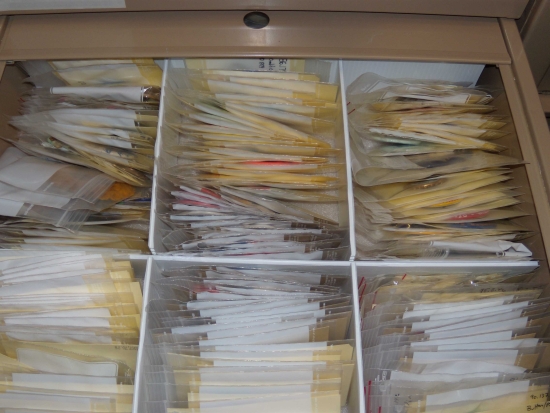
The bags are stored vertically in a drawer or box numerically by catalog number. Because they are in the bags, they can be handled without worry about gloves. Under the right supervision, researchers can easily look at them too.
This is a very easy method, it is inexpensive and can be done relatively quickly with very little training. I will often have pieces of card stock cut ahead to fit the zippered bags sizes that I use.”
Thanks for this storage solution!
Remember: if you have seen a great storage solution, please inform us by commenting or sending a mail to story@museumsprojekte.de
This post is also available in Italian, translated by Mazia Loddo and in French, translated by Marine Martineau.
Storage Solutions: Button Storage at MJH
Storing buttons can be tricky. You can’t put them with others into one ziplock bag because they will rub against each other. You can place them each in its own small ziplock bag but then the bags slide in the box and a single button is not easy to retrieve. Recently I stumbled upon a great button storage solution from the Museum of Jewish Heritage in New York:
They published it on the twitter account of their registrars @MJHReg (sure worth a follow, great stuff and pics!) and I contacted them to ask if we were allowed to re-publish it on Registrar Trek. Associate Registrar Jennifer Roberts replied immediately and gave us the permission. She also sent additional pictures…
…and explained how it was made:
“For this particular collection, our Preparator is making custom trays out of blue board and archival paper hinging tape that will stack inside a standard archival box. Making custom trays has allowed us to fit approx. 350 buttons per box while keeping the buttons stable and easily accessible. The buttons are arranged by size to help save space, and we are currently digitizing the collection so we will have reference images to help us locate individual buttons in the future.”
Isn’t it lovely? Got to try this…
This post is also available in French, translated by Marine Martineau and in Italian, translated by Mazia Loddo.

